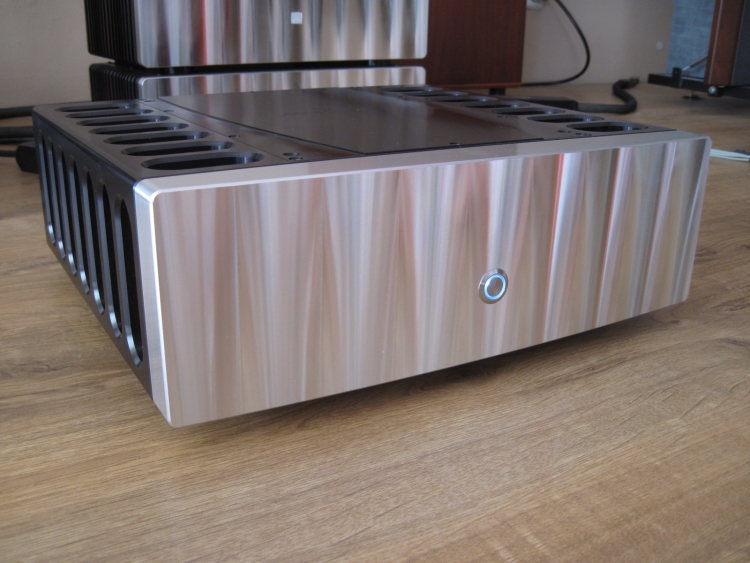
Above: Review setup – The Jeff Rowland Corus is reviewed separately
725 sound, right after unpacking
Although this pair is privately used by Hans and has supposedly been in use long enough to be run in, they did arrive cold from their boxes. Naturally, I couldn’t control myself and did have a listen straight after connecting them up. After initial connection, they sounded powerful, dynamic, fast and lively. But what was missing was refinement and coherence and musical flow. They were only impressive for my mind, not sounding very emotional. They were somewhat reminiscent of the 201 ICE power units that way. I listened to them for a few hours but the sound did not improve so I just left them powered on and found something else to do. Their aluminum housing was cold to the touch and remained cold the entire evening. I was worried that they were now so eco-friendly that they wouldn’t warm up at all but those fears were unnecessary: the next morning, after having been switched on all night, they felt nicely warm and are at about the same temperature as my model sixes.
Adrenaline
Before heading off to work I briefly listened to them again and was happy to find that they now sounded completely different: much more Rowland-like in terms of continuity, fluidity and charm. What remained was their massive bass control and explosive dynamics. These amps really invite to play the hardest, meanest audio tracks while increasing volume again and again. I selected a CD by Yoshinori Sunahara, filled with bass-loops and hard-hitting synthesizer sounds and the 725’s just gobbled up the deep and powerful bass stabs. At some point, my windows were rattling but the 725’s did not cave: on the contrary, they seemed to ask for more and more and it seemed they were just incapable of ever running out of steam. I found it electrifying beyond belief. It was like having Brystons yet with transparency they can only dream of. I couldn’t suppress a continuously growing grin throughout track selection and concluded: these 725’s are Rowlands on steroids! And after putting a CD on repeat, off I went for work. Lesson learned: Rowlands, like Wadias, should not be switched off for extended periods.
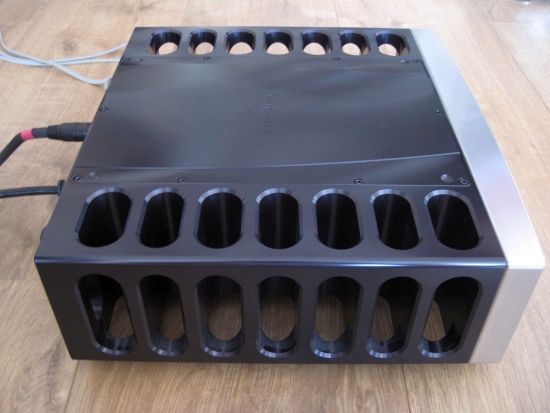
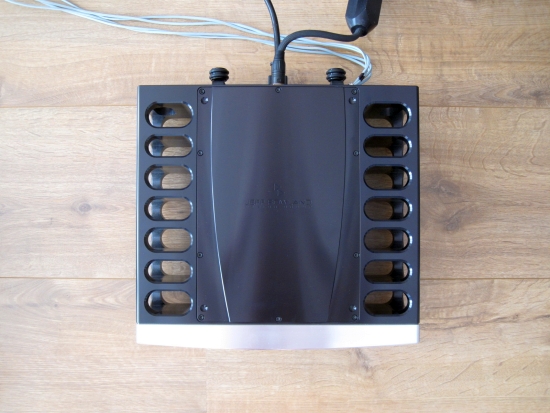
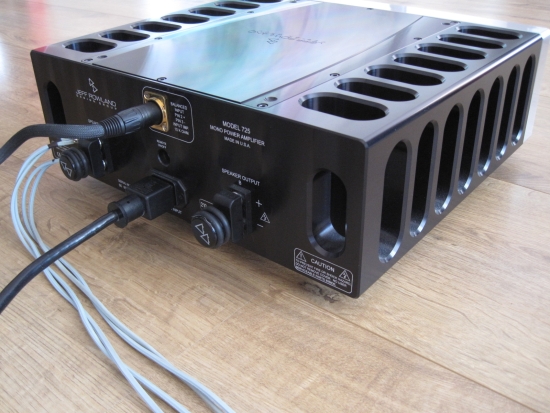
Continued listening
After coming home from work and having had one of my indestructible spare swing-arm Philips CD players on repeat all day, the 725’s were still nicely warm, seemingly not any warmer than in the morning, when they had only been switched on but not playing any music. It seems that the aluminum housing takes longer to warm up than the more hollow model sixes but is also more stable in temperature.
After playing more music I was still in love with their bass and very content with their dynamic abilities but depending on the CD that was played now became a little worried that although they definitely carried the Rowland sound signature, the 725’s weren’t quite as fluid and continuous, or as finely resolved as the sixes. But their bass power and superb control more than made up for it. This is what people are on about when they talk about authority and the 725’s have it in spades.
Less fluidity or continuity is a matter of balance but less resolving power? Surely the 725’s would be just as detailed as the sixes? I couldn’t believe it and carried on testing. But the more CD’s I played, the surer I became: the 725’s trump the sixes as well as several powerhouses out there in terms of bass power, bass pitch and definition, dynamic expression and all-out stability and authority. A friend is using a Krell FPB600 on the bass panels of his Apogee Full Range speakers and swears by it, but I’d bet that the 725’s can show the Krell a thing or two in the field of bass definition and power. But at the same time, some CD’s that were previously lush and lovely using the model sixes, now were a little dry and business-like, less analog if you will. But was this really a matter of resolution? And would that classify the sixes as better than the 725’s? Of course not. But the sixes do sound more fluid and lush and more continuous. Decay goes on longer. But after some more listening, it became clear that that’s a function of their being less controlled. Bass control on the sixes is definitely not bad at all, but compared to the 725’s the sixes are more blurry and less powerful in the bass. This relative lack of control carries on through the midrange to the treble, which is, therefore, more continuous and less damped, which I like in treble when using highly accurate ribbon speakers.
So, on balance, the 725’s have just as much resolution as the sixes, but more easily show dry recordings for what they are, and they certainly cannot be blamed for that. The sixes, with their more romantic view, tend to make less than stellar recordings still enjoyable but this is very much a matter of context, not of absolute quality.
The more I listened to the 725’s and compared them to the sixes, the more difficult it became for me to choose between the two. I would classify them as being of equal quality, both possessing the Jeff Rowland house sound, but with shifted perspectives. Both the 725’s and the model sixes have the same superb soundstage layering, provoke emotions in the same manner and are both blessed with a perfect combination of transparency and lushness, the sixes tilting more toward a rosy forgiveness and the 725’s tilting more towards honest and dynamic portrayal. In short: the sixes are more romantic and the 725’s are more live, more life-like.
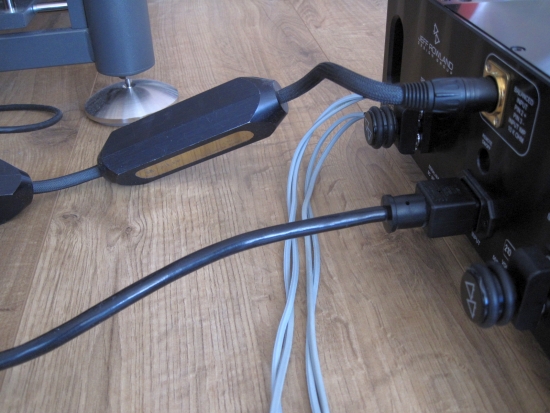
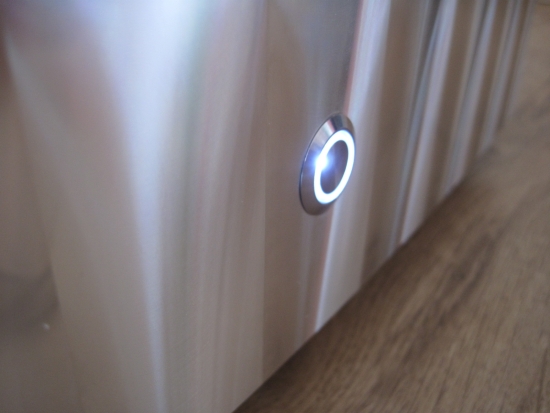
I have only 3 small observations regarding design choices that I was not entirely happy with, of which 2 have been addressed in a mail I received from Jeff via Hans.
First, the XLR input on the rear is reversed in position compared to all connectors I have and have had in my system, less the Rowland Aeris. This is particularly inconvenient when using stiff cables such as the Cardas Hexlink Golden 5C. In the case of the 725’s and my Transparent Reference interlink, this results in reversed network boxes, showing their screw-hole and hiding their gold nameplates from view.
Jeff responded to this: “The jack can simply be rotated 180 degrees, from the back of the unit without removing any covers. Just remove the two small supporting screws on the XLR with a small Phillips screwdriver and gently rotate the connector half a turn. The input wire connected to the connector internally is flexible enough that the connector can be repositioned without any strain on the wire.
Second, the blue power indicator lamp avoids being beamy on a direct axis like the blue LEDs on the ICE power models were, but all the same is beamy at an angle and overall less lovely than the very refined, candle-light-like lamps on the model sixes. The blue LEDs used in the 725 also seem to be chopped and blink at a very high rate. This is definitely not noticeable to everyone but if you are bothered by DLP flashes and the chopping frequency of the surrounding light of Philips Ambilight TV’s, you’re likely to notice this too. Jeff responded to this: “There is an internal small PC board switch which can be adjusted for faceplate lamp brilliance or even off. The switch is located on the power supply PC board and has 4 slides. Slide 1 and 2 adjust brightness. Bright is 2 on, dim is 1 on, both 1 and 2 off make light off when the amp is on. Some like bright and some prefer dim so I made the option to choose.” However, Hans indicated that the lamps were already in their lowest setting.
Finally, I think that the choice of the power button is somewhat detrimental to the amp’s overall design. The casing really is a work of art and I wished they had chosen a more refined power button, like the one used on the model 10, 12 and 112.
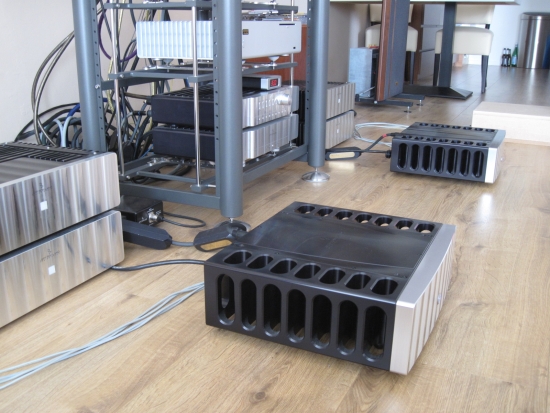
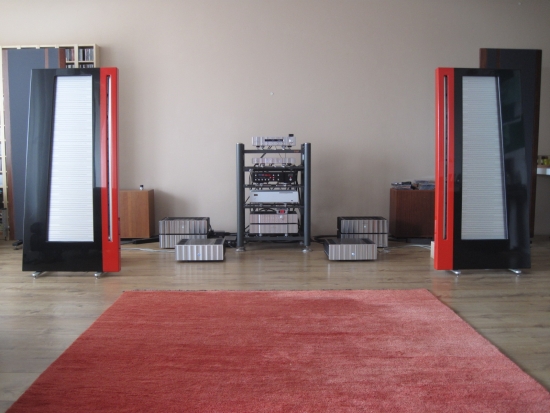
The above comparisons were all done using restored Apogee Duetta Signature magnetostatics. For the final touch, I reconnected my usual Magnepan MG 3.6R magnetostatics (at first without the REL Strata subs) and re-evaluated the sixes and 725’s.
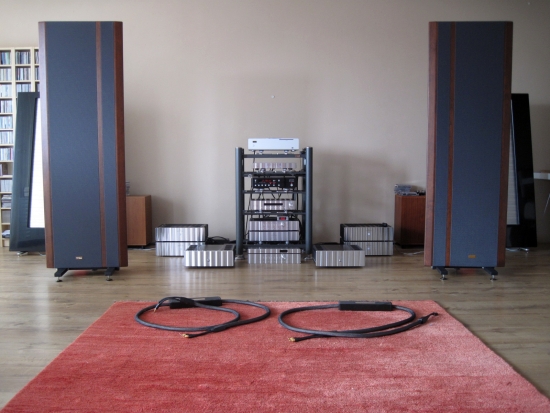
While the Apogees were happy with both amps, the Magnepans had clearer preferences. Where the Apogees were all too happy with the added bass control and dynamic grip of the 725’s, the Magnepans became a little too controlled and did not seem to benefit from the 725’s superb bass quality. Never mind that, as this is clearly something to blame the Maggies for, because their bass panels are much more restricted in movement than the Apogees’ ribbons are. It is just the nature of these beasts. The sixes however, even if their midrange was clearly less communicative and the overall balance now seemed a little bit more boxed in, seemed to be more synergistic. They just balance out better. But after having listened to the Apogees for over a month and also having gotten used to the 725’s fantastic life-like sound, I wasn’t entirely happy with the Magnepan-model 6 sound either, mostly being discontent with the slower pace. You should know that the Maggies have always been driven using Transparent Reference XL speaker cables and while these cables always matched perfectly when I still used Spider equipment racks, ever since I started using an Artesania Exoteryc rack, the sound was admittedly a little slow.
Before the 725’s arrived, the Apogees were also connected with the same Transparent cable but even if this made them more forgiving and sweeter in tonality, I couldn’t get over the slower pace and dynamic compression. The Apogees are connected using very cheap Van Den Hul cable but somehow, the combination works. So, for the Magnepans, I now also pulled out some basic speaker wire (brand unknown) and substituted it for the Transparent. Yup, back was the pace and at the same time the midrange became more open and communicative. But what remains very obvious is the Magnepan’s lack of bass power. Dynamics seem to be very constrained in the bass region. Curiously enough, reconnecting the subs not only provided better extension, more colorful sound and a larger soundstage but also greatly improved the sense of dynamics and attack. Clearly the Maggies’ midrange doesn’t lack slam or expression and is in fact very well-controlled. And that goes some way toward explaining why they match less well with the 725’s, the combination simply making for too much control. The remainder of this story is more something for the upcoming Magnepan versus Apogee review so I won’t write much more about it here. But suffice to say that because of the Magnepans’ character and flaws, the match with the model sixes (and stock speaker wire) works better for me than the match with the 725’s (using either stock or Transparent speaker cables).
This is once again not a complaint at the address of the 725’s, merely an indication of what has become something of a personal mantra, which is that balance is everything. Some components work synergistically with each other while others seem to work against each other. That’s only natural.
Postscript september 2013
The sixes were listened to both with and without BPSses attached. Their sound is influenced as soon as the BPS is connected. Switching them on then makes for the last mile. The sixes sound more like 725’s without the BPSses in terms of bass articulation and power, but they then also sound less charismatic, charming and less colorful. For the purpose of this review, the sixes were judged with BPSses attached, but not switched on.
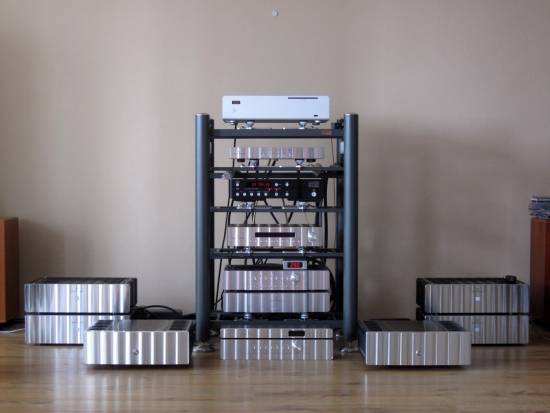
Conclusion
Regardless of the different results using Magnepans or Apogees, my opinion of the 725’s remains utterly positive: they are simply fantastic amplifiers and a more than worthy addition to the Rowland Repertoire. They do not betray their legacy but manage to add more power, better dynamics, a more life-like sound and a heretofore unheard midrange purity while avoiding to slip into clinicality or leanness. What’s more: while the midrange can be slightly forward (compared to the slightly recessed model sixes) it is never shouty or aggressive. That sums up what I have become to know as the Rowland House Sound: all the transparency, tonal richness and delicacy one can wish for, combined with life-like dynamics and an utter lack of aggression. Oh, and even if the model sixes, with their 150 watts, already show big Krell KSA250’s a thing or two about bass quality and articulation, the 725’s, I suspect, will simply wipe the floor with many so-called bass champs. By the way: I’m sure that I could tweak my system in such a way that the Magnepans would work well together with the 725’s. This would involve relocating the speakers and using different powercables, interlinks and speakercables. But that was well beyond the scope for this review. I can’t afford the 725’s, not even at second hand prices. But finances aside, I would not know of a better candidate to replace my sixes with, than the 725’s. I can only dream of what the 925’s would be capable of. Scary stuff…
External Links
Manufacturer: Jeffrowlandgroup
DISTRIBUTOR BENELUX:
HVP Audio
Prinses Irenelaan 218
2285GB Rijswijk
Nederland
Telephone: +31 61 492 69 47
Website : www.hvpaudio.com
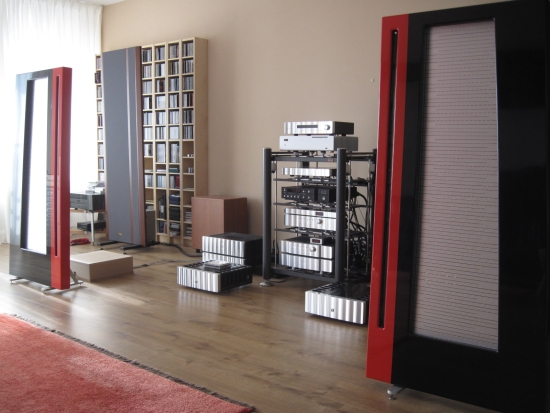
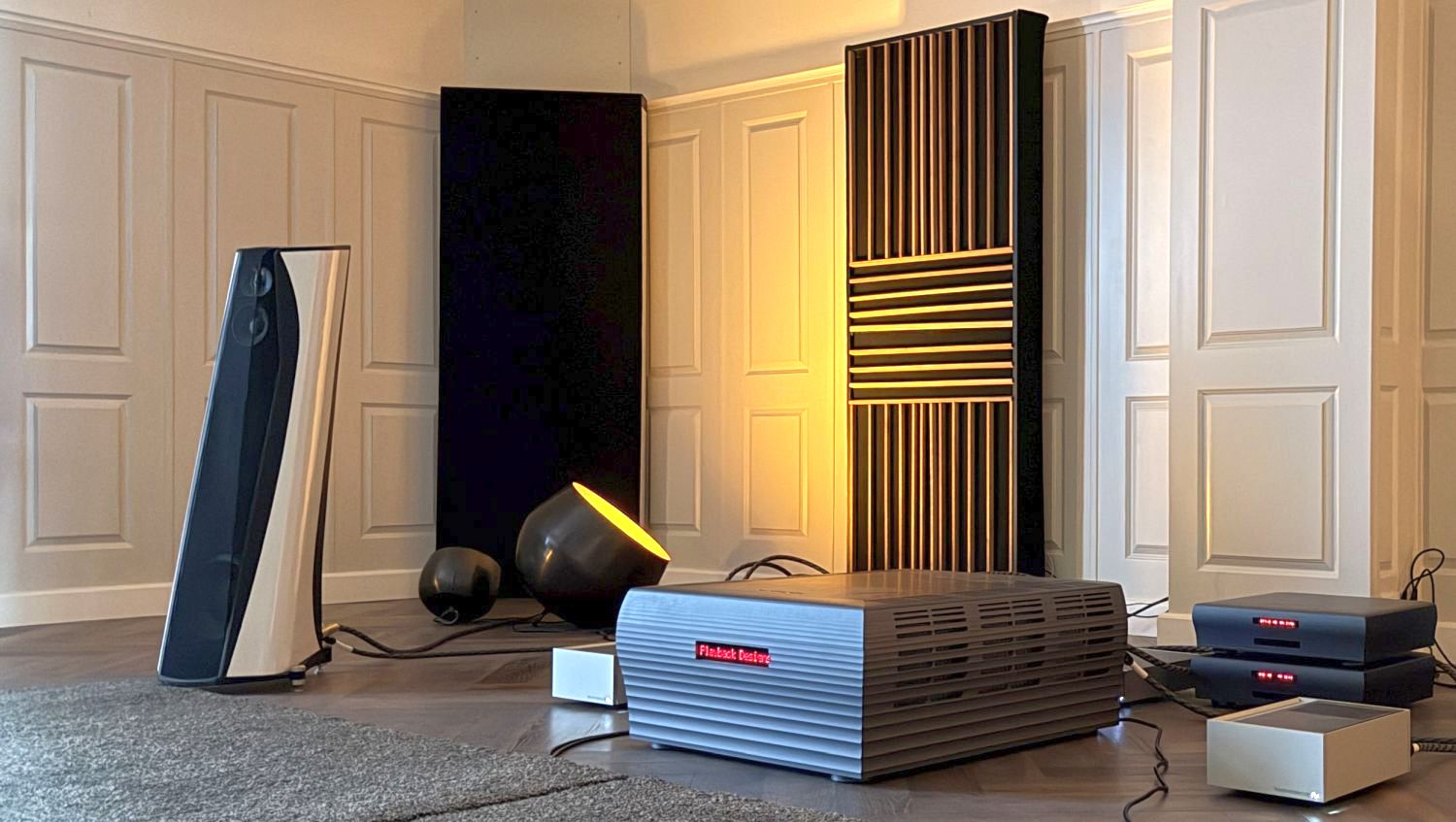
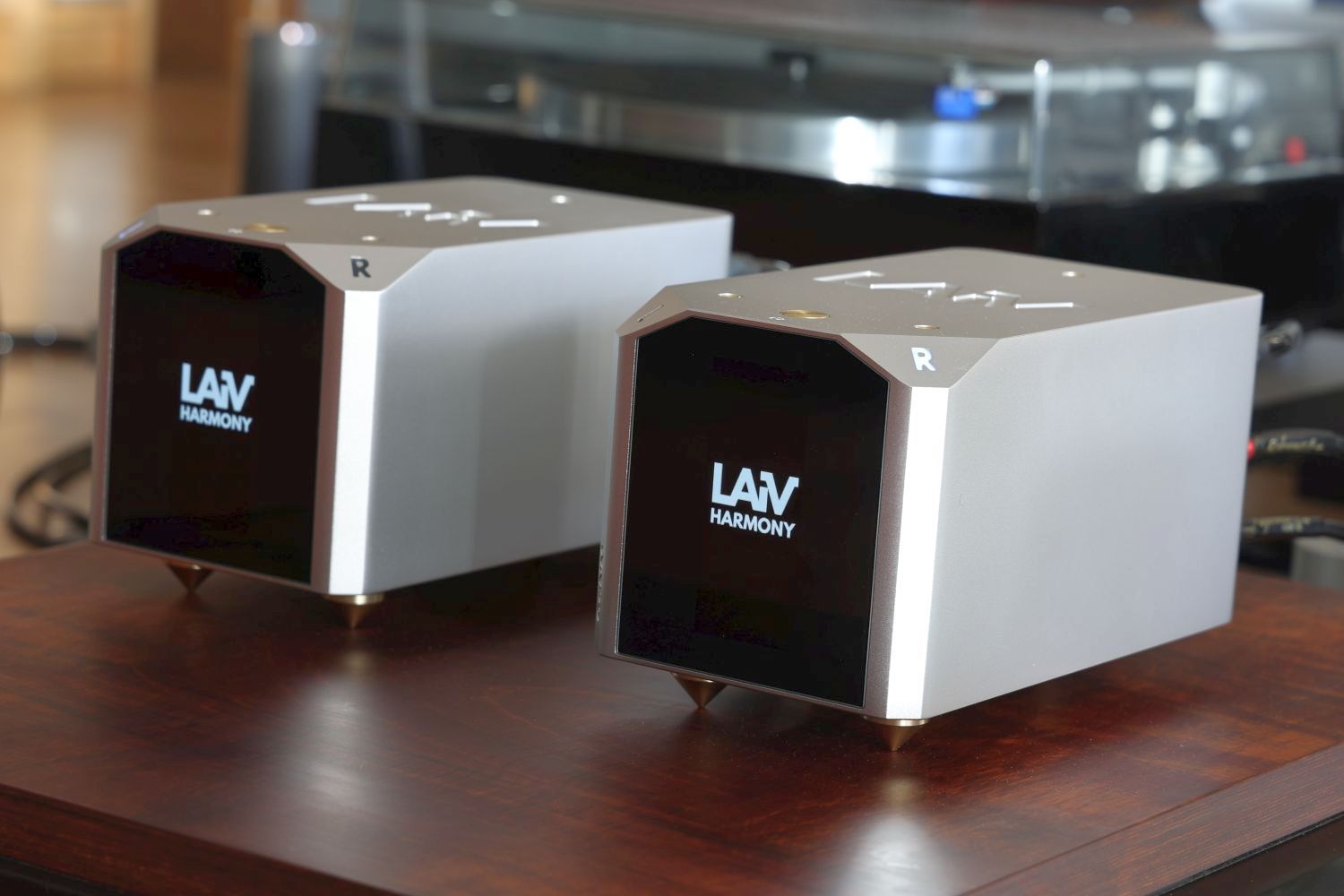
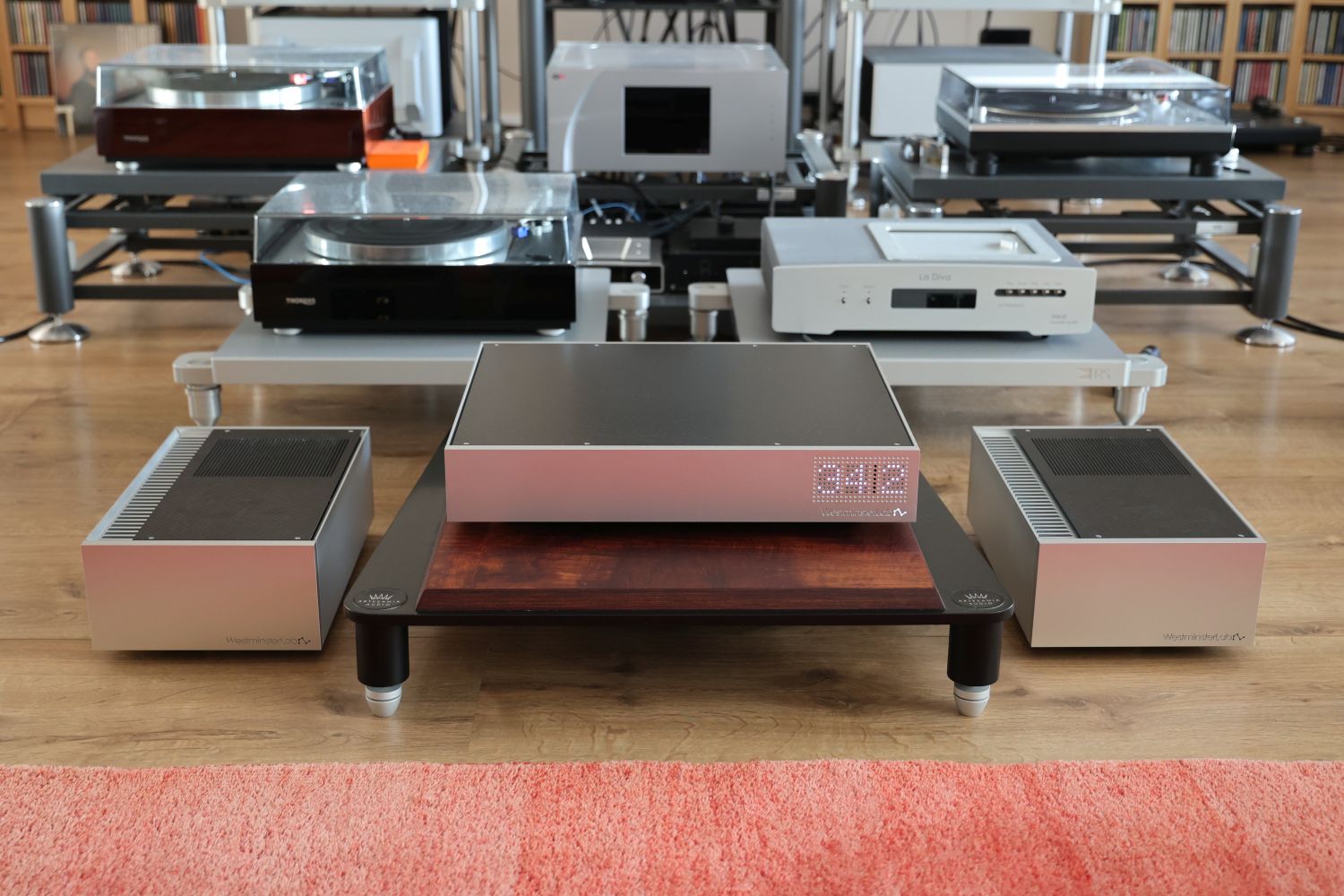
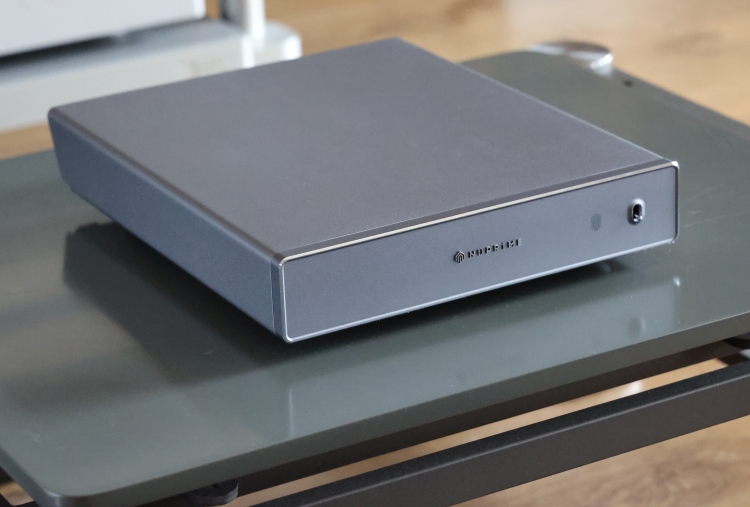
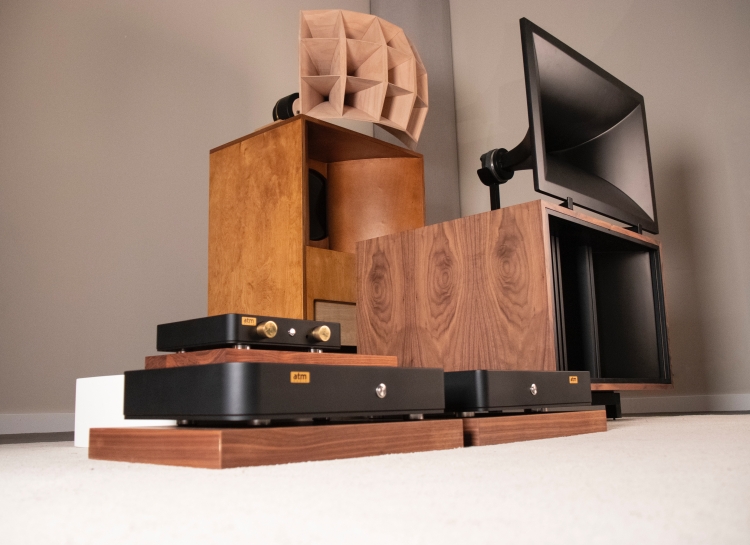
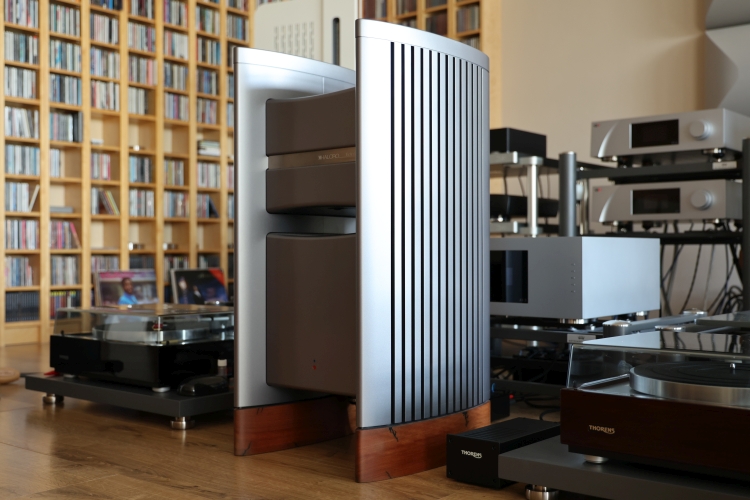
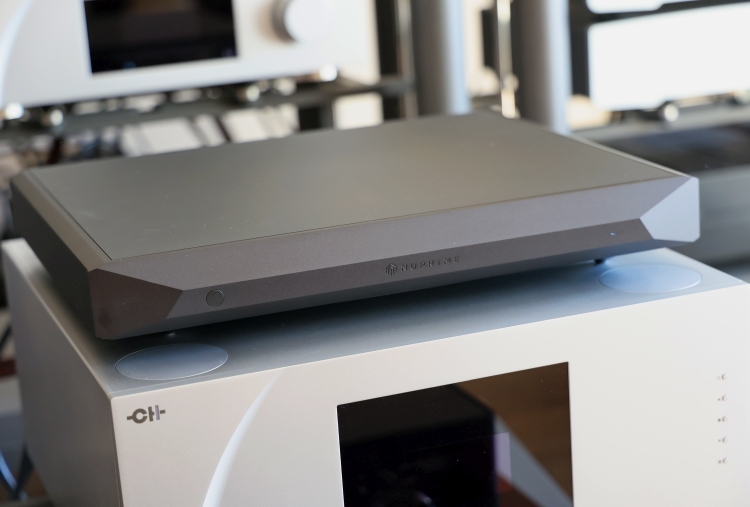
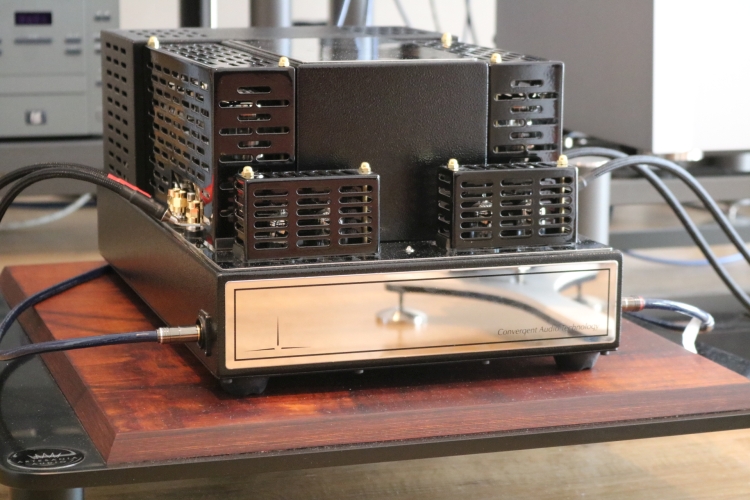
Hello mister Punter.
Now my system is JR 925+CORUS+AERIS+PSU+BERKELEY ALPHA CONVERTER USB SPDIF.
I powered my 925 with completely rebuilt new DAYTON WRIGHT speakers with quality parts. these speakers have an efficiency of 82 db. But just changed and bought SARASTRO IIS FROM VERITY AUDIO at 93 db. I had acquired the 925 for their sound quality but also to power my DW. Friends tell me that I don’t need that much wattage for my SARASTROs. However, I have a lot of trouble understanding the fact that Jeff Rowland or other companies make amps with so much power. Example the 925, the deamon at 1500 watt per channel and recently the 735.
Can you explain to me the reason for such power. There must be some reason other than power that justifies making amps of this caliber. The majority of speakers today are very efficient.
I am told that some manufacturers, sometimes American, produce powerful amps only to impress audiophile customers. I do not believe it.
Enlighten me?
other question. I’m very satisfy witch INNUOS STATEMENT. what do you think.
Thank you very much.
Hi Laurier, please note that I moved your comment to a more appropriate review since you’re asking about power amplifiers.
I agree with you that in most cases 1500 watts is probably overkill. Also, certainly in the analog/linear world, a super-powerful amplifier often does not sound as nuanced and refined as a lower powered one. I’ve not heard the 925’s or the Daemon in my own system so cannot really comment on their relative performance but based on what I heard them do at shows they sound very good.
I’m not sure if the majority of speakers are indeed very efficient, though. It’s also misleading to look only at the sensitivity rating. There are often phase shifts due to crossovers and reflex ports that effectively make the speaker suck multiples the normal wattage from an amplifier at those frequencies. If the amp is not capable of delivering the requested power then you will hear a loss of control and/or dynamics. While my relatively “normal” Magico S1 MkII’s can be driven with a relatively modest amplifier, they, too, start demanding serious watts if you play them loudly. The CH Precision A1.5’s watt meter easily indicates close to 400 watts of dynamic power when cranking the volume.
Also, wattage is not the same as power. What you need is current and the amount of watts says very little about this. There are indeed manufacturers that make amplifiers that have amazing watt-figures but if you look at the rates into 4 ohms and 2 ohms (if these amps even allow the use of sub-4 ohm speakers) you get a hint of the power supply’s current capability. Ideally the values should double or at least increas substantially. To my knowledge, serious amplifier makers such as Mark Levinson, Krell, Dan D’Agostino, Bryston, Soulution, Analog Domain, CH Precision, Jeff Rowland, and the list goes on, do not produce amplifiers for the sake of power alone. They design them such that they are powerful AND sound good.
In conclusion, it depends on how deeply the impedance of your speakers dips and how loudly you play. If the speakers are moderately sensitive and have a flat impedance curve then you do not need much power at all. When the power supply is stable then 150 watts is usually more than enough unless you play at party-level. And with extremely sensitive speakers (rating close to 100dB) you might only need 10 or so watts. You see, it is relative.
Alas, I have not heard any Innuos server in my system so cannot comment.
Many thanks for this review of M725. How do you compare the sound with vintage Rowland M8T sound with WP6? Is it similar, or if wanting to upgrade to something similar but better woukd you suggest going to the M825?
Hi Fran, alas, the M8 and M825 are two of the few Rowlands I have no personal experience with. Do please note that the M8 is a traditional Class A/B amp with a linear power supply, similar to M6 (albeit alledgedly sounding different), while the M825 is based on switching class D technology, probably Pascal. That said, I think it is safe to forecast the M825 will bring a massive improvement in the bass, speed, overall precision, and transparency, compared to the M8. However, will it be just as silky, fluid/smooth, and delicate, that is the question. Probably not, but another question is whether you are looking for a more romantic sound, or an overall more realistic sound.